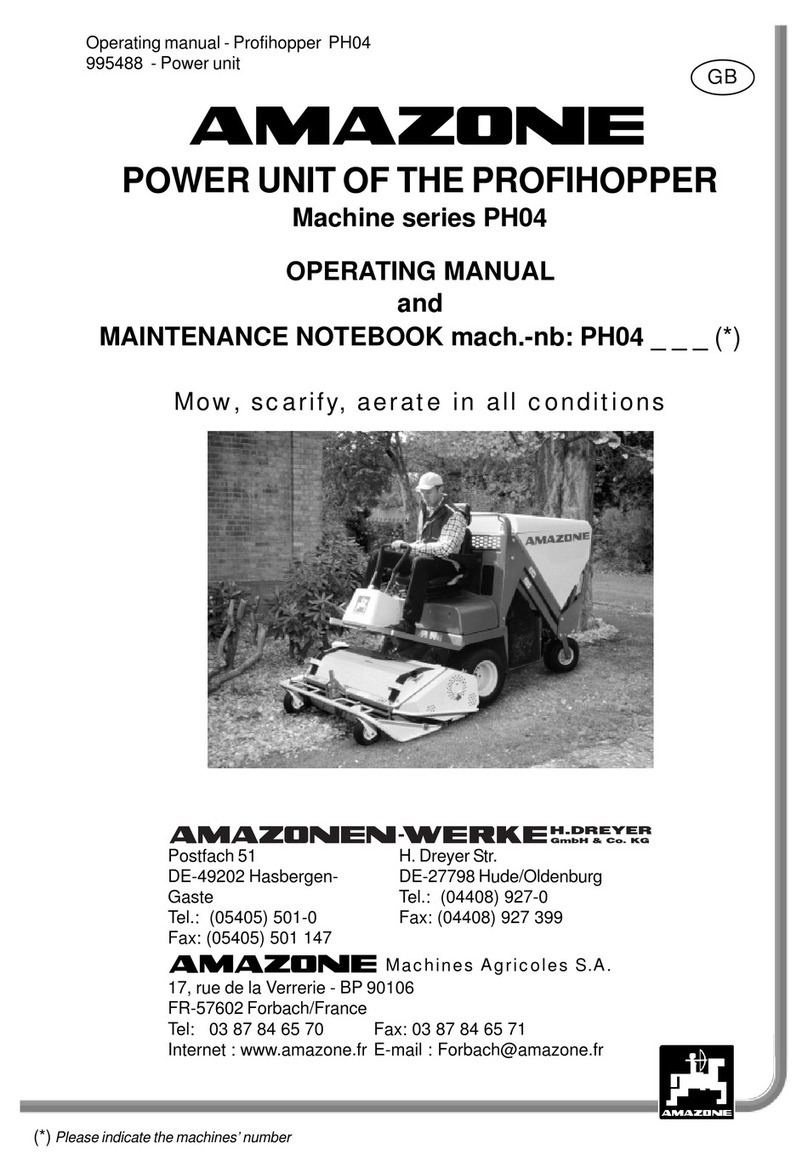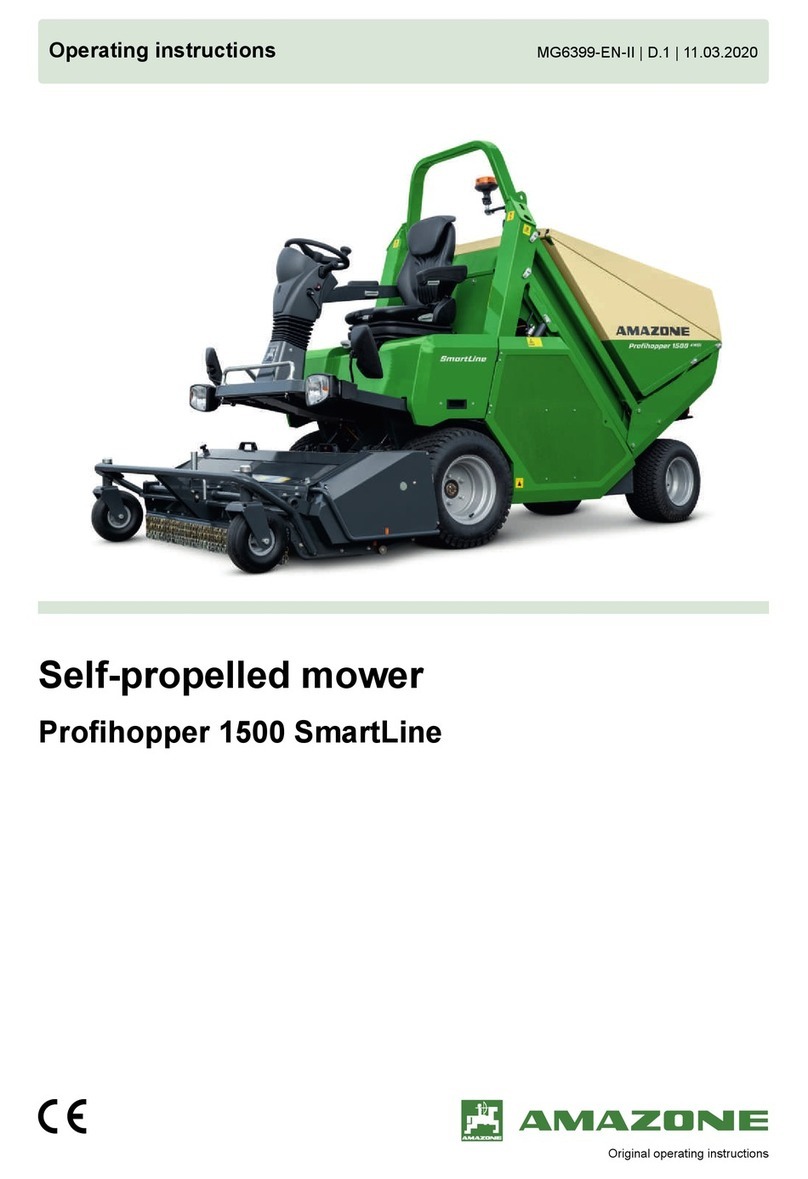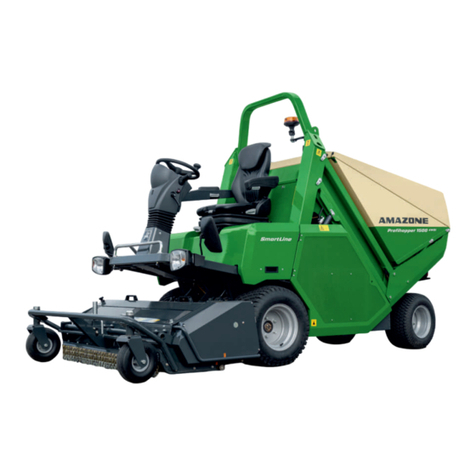
5.3.1 Cutting dimensions 49
5.3.2 Cutting tools 49
5.4 Tyres 49
5.4.1 Tyre dimensions 49
5.4.2 Tyre inflation pressure 49
5.5 Permitted mounting categories 50
5.6 Optimal working speed 50
5.7 Performance characteristics of
the tractor 50
5.8 Noise development data 51
5.9 Drivable slopes 51
6 Preparing the machine 52
6.1 Removing the transport lock 52
6.2 Checking the tractor suitability 53
6.2.1 Calculating the required tractor
characteristics 53
6.2.2 Comparing the permissible DC
value with actual DC value 56
6.2.3 Checking the protective device for
the tractor PTO shaft 56
6.3 Calculating the permissible
payload 56
6.4 Preparing the drawbar 57
6.4.1 Adjusting the upper drawbar 57
6.4.2 Adjusting the lower drawbar 60
6.5 Preparing the universal joint shaft 61
6.6 Installing the universal joint shaft
on the implement 61
6.7 Coupling the implement 62
6.7.1 Driving the tractor towards the
implement 62
6.7.2 Coupling the hydraulic hose lines of
the Standard hydraulic system 63
6.7.3 Coupling the power supply for the
lighting 65
6.7.4 Coupling the electro-hydraulic control 66
6.7.5 Coupling the implement with the
upper drawbar 70
6.7.6 Coupling the implement with the
lower drawbar 71
6.7.7 Coupling the universal joint shaft 72
6.7.8 Removing the wheel chocks 72
6.8 Checking and adjusting the
lowering time for the grass
collector 73
6.8.1 Checking the lowering time 73
6.8.2 Adjusting the lowering time 74
6.9 Preparing the implement for
operation 76
6.9.1 Removing the transport lock from
the cover flap and swivel flap 76
6.9.2 Checking the tyre inflation pressure 76
6.9.3 Checking the blades and blade
mounts 77
6.9.4 Selecting the blades according to
the application area 77
6.9.5 Selecting the blade equipment for
scarifying 81
6.9.6 Changing or replacing the blades 82
6.9.7 Adjusting the cutting height 85
6.9.8 Adjusting the front roller for scarifying 89
6.9.9 Setting the implement for mulching 92
6.9.10 Setting the implement for collecting
on hard ground 94
6.10 Preparing the machine for road
travel 96
7 Using the machine 98
7.1 Using the implement with
Standard hydraulic system 98
7.1.1 Starting mowing 98
7.1.2 Stopping mowing 100
7.1.3 Mulching 100
7.1.4 Scarifying 100
7.1.5 Emptying the grass collector with
Standard hydraulic system 101
7.2 Using the implement with
electro-hydraulic controls 102
7.2.1 Starting mowing 102
7.2.2 Stopping mowing 104
7.2.3 Mulching 105
7.2.4 Scarifying 105
MG6212-EN-II | C.1 | 12.04.2021
II
































